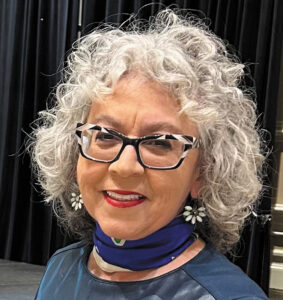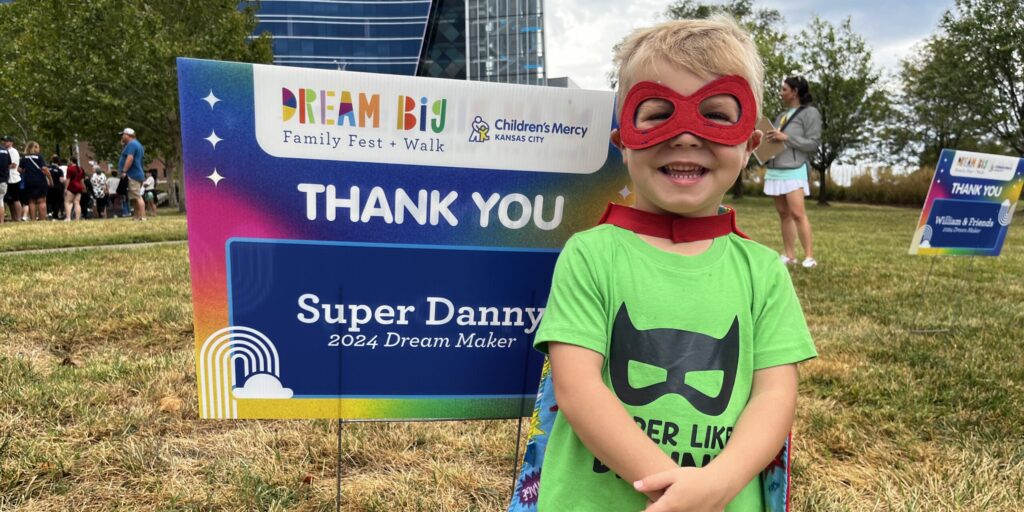
6 Tips for Living Well as a Senior with Neuromuscular Disease
By Barbara and Jim Twardowski, RN | Tuesday, August 13, 2024
5 Second Summary
Follow these strategies for seniors to manage a progressive disease while dealing with common challenges that come with aging.
Aging is a journey, and everyone’s path is unique. Older adults with neuromuscular diseases experience many of the same milestones as others — retiring, adapting to changing mobility and energy levels, modifying the home for convenience and safety, learning to accept help and caregiving — but managing a progressive disease while dealing with these common challenges requires extra flexibility and resilience.
Here, experts and members of the neuromuscular disease community weigh in on how aging intersects with neuromuscular disease and share six strategies to make this time of life truly golden.
1. Find purpose

Ranae Beeker participated in an advocacy trip in Washington, DC.
Post-career blues are common. For Ranae Beeker, 65, it was especially difficult because she wasn’t ready to retire when her facioscapulohumeral muscular dystrophy (FSHD) progressed to the point that she could not perform the physical duties of her job. As a registered nurse, she was on her feet, carrying heavy materials, doing paperwork, and filing. Her 40-year career in nursing ended when she applied for disability at 62.
This “forced retirement” left her feeling down. For a year, she wondered how she was going to fill her time. “My brain was used to working really fast and really hard, and all of a sudden, I didn’t have anything to do. So, I started volunteering,” says Ranae.
She began answering calls for a suicide prevention hotline, and she became an MDA Ambassador and participated in an advocacy trip to Washington, DC. Ranae also serves on three county committees and the disability ministry board of her church. “Volunteering makes me feel like I have a purpose — I can be productive,” says Ranae.
2. Stay active
“A healthy older person needs to exercise more than they did at a younger age to maintain their muscle mass,” says Catherine Loman-Hoerth, MD, PhD, a neurologist and Director of the MDA ALS Care Center at University of California San Francisco Medical Center. “For someone with a neuromuscular disease, even a mild underlying weakness can become more severe as they age due to loss of muscle mass.”
If a patient’s weakness is severe, however, exercising can damage their muscles. Healthy muscle fibers will deteriorate over time from aging and the neuromuscular disease.
Dr. Loman-Hoerth recommends asking your physician for a neurological physical therapist (PT) referral. This healthcare professional instructs clients on appropriate stretching moves and strengthening exercises that will help maintain strength without damaging muscles.

Ed Linde’s three-wheel motorcycle allows easy transfer from his wheelchair.
“I try to make sure my patients are in physical therapy as much as possible because as the disease changes, the recommendations change. A PT will know how much exercise is too much or too little,” Dr. Loman-Hoerth says.
The best way to stay active is to find activities you enjoy. Ed Linde, 66, lives with Charcot-Marie-Tooth disease (CMT) and uses a wheelchair.
“As I went through life, I progressed from ankle-foot orthoses (AFOs) to walking with a cane, to a walker, to using a wheelchair part-time. Now, I’m permanently in a wheelchair. So yes, I’ve faced my challenges, especially getting older,” Ed says.
He’s chosen to continue doing the things he loves by making them work for his needs. Twice a week, he gets his exercise by bowling with adaptive equipment in a local league. Another activity he enjoys is wheelchair dancing with his wife at music venues, bars, and the American Legion hall. They took lessons with an instructor who adapted the moves for them. Ed and his wife also enjoy outings on his three-wheel motorcycle.
3. Think ahead
It pays to be prepared for changes that might be coming down the road. Ranae’s training as a nurse helped her prepare for aging with FSHD. She listened to other people who have her disease and observed how they adapted. One smart decision she made was choosing a single-level home.
“Living with a disability is not cheap; it’s expensive,” says Ranae, who consulted financial advisors and contributed to retirement savings plans through her work. Now, she lives modestly and tries to be wise with her money.
By developing friendships with like-minded people, Ranae has found affordable ways to have fun and not feel like she is missing out. “We get together and play games as opposed to going to shows or big vacations. Not that I have anything against vacations, but it’s a lot of money I could use for something else,” she says.
Ed and his family have lived in the same home for 25 years. Their shower doesn’t accommodate a wheelchair, so he takes baths. This year, he bought a bathtub transfer bench when the weakness in his legs made it difficult to stand up. A walk-in tub might be a solution in the future.
Making home modifications can enhance independence and improve safety for aging residents. Before implementing changes, consult with an occupational therapist, who can help identify challenges before they occur and propose solutions.
4. Know your coverage
Medicare is available to anyone 65 or older and some people under 65 with disabilities. Medicaid requirements are based on income and other factors and vary from state to state. Medicaid offers some benefits that Medicare doesn’t usually cover, like home healthcare and home modifications. It is possible to have both Medicare and Medicaid coverage.

Gina Rossi recommends working with a social worker.
Take the time to thoroughly review your health insurance coverage — some plans provide benefits such as discounts on meal delivery, gym membership, and wellness products. Gina Rossi, LCSW-BACS, DCSW, an adjunct instructor at the Louisiana State University School of Social Work, recommends asking your doctor for a referral for a clinical social worker who is familiar with local resources that may be able to assist you with a variety of needs, from building a ramp to finding respite care.
Dr. Loman-Hoerth recommends considering long-term care insurance, which would cover home healthcare, respite care, residential care, and other services. However, unlike health insurance, long-term care insurance is not required to cover preexisting conditions. (Learn more about planning for long-term care needs.)
5. Accept help
To do her volunteer work, Ranae needs help from the people around her. “If I can’t get through a door or whatnot, my saying is, ‘May I borrow your muscle?’ That usually makes people giggle a little bit. I’ve never met anybody who didn’t want to help me,” she says. “I try to be very independent, but I also know every one of us is dependent upon somebody, whether it is to grow your food, provide you with electricity, or fix your car; we are all very much interdependent.”
After Ranae retired, one day, she fell in her bathtub and could not get up. She used Alexa to call her son. “It was very scary,” says Ranae. After the accident, her son moved into her home. He does the cooking, shopping, and gardening. He assists her with transfers from her wheelchair in the bathroom and into bed. Accepting her son’s help was not easy, but she has set aside her embarrassment and pride. “I am blessed he is as kind and caring and understanding as he is,” says Ranae.
Paid caregivers can also be valuable members of your caregiving team and help family caregivers avoid fatigue. The MDA Resource Center can provide one-on-one support via phone or email for individuals and families looking for local caregiving resources, support groups, disease information, and more.
6. Pay attention to your mental health
“People who have chronic illness are susceptible to depression,” says Gina. Be proactive in keeping a healthy mental state by seeking the help of a therapist, finding hobbies you enjoy, and maintaining a social life. Find resources to support your mental health needs through MDA’s Mental Health Hub.
Ranae joined a CMT support group. Joining a support group provides an opportunity to talk openly about your challenges and realize you are not alone.
“My advice is to keep moving forward and don’t let the challenges in life stop you from your passion,” Ed says. “I watched my uncle, who had CMT and was in the same position I am at this age, give up. Basically, he would just sit in his room, watch TV, and never go anywhere. I’ve made the choice to be the opposite — to get out there and try to keep moving. My son has CMT, and I hope my positive attitude encourages him.”
Barbara Twardowski has Charcot-Marie-Tooth disease (CMT) and uses a power wheelchair. Jim, her husband, is a registered nurse. The couple lives in Louisiana and writes about accessible travel, health, and lifestyle.
Resources for Seniors
You don’t have to do the journey alone. Use these resources to find the support you need.
Benefits
Centers for Medicare and Medicaid Services
Services
Centers for Independent Living
Disability Information and Access Line: 888-677-1199
MDA Resource Center: 833-ASK-MDA1 or ResourceCenter@mdausa.org
Home modifications
Government home repair assistance programs
Education
MDA Access Workshop: Access to Financial Independence
Making connections
MDA Peer Connections: 833-ASK-MDA1 or ResourceCenter@mdausa.org
Next Steps and Useful Resources
- Learn how to protect yourself from online scams that target older adults and people with disabilities.
- Read about how Aging and Neuromuscular Disease Share Symptoms – and Solutions.
- Stay up-to-date on Quest content! Subscribe to Quest Magazine and Newsletter.
TAGS: Caregiving, Community, Featured Content, Finance, Insurance, MDA Resource Center, Mental Health, Personal Care Attendants, Staying Active, Volunteers
TYPE: Featured Article
Disclaimer: No content on this site should ever be used as a substitute for direct medical advice from your doctor or other qualified clinician.




